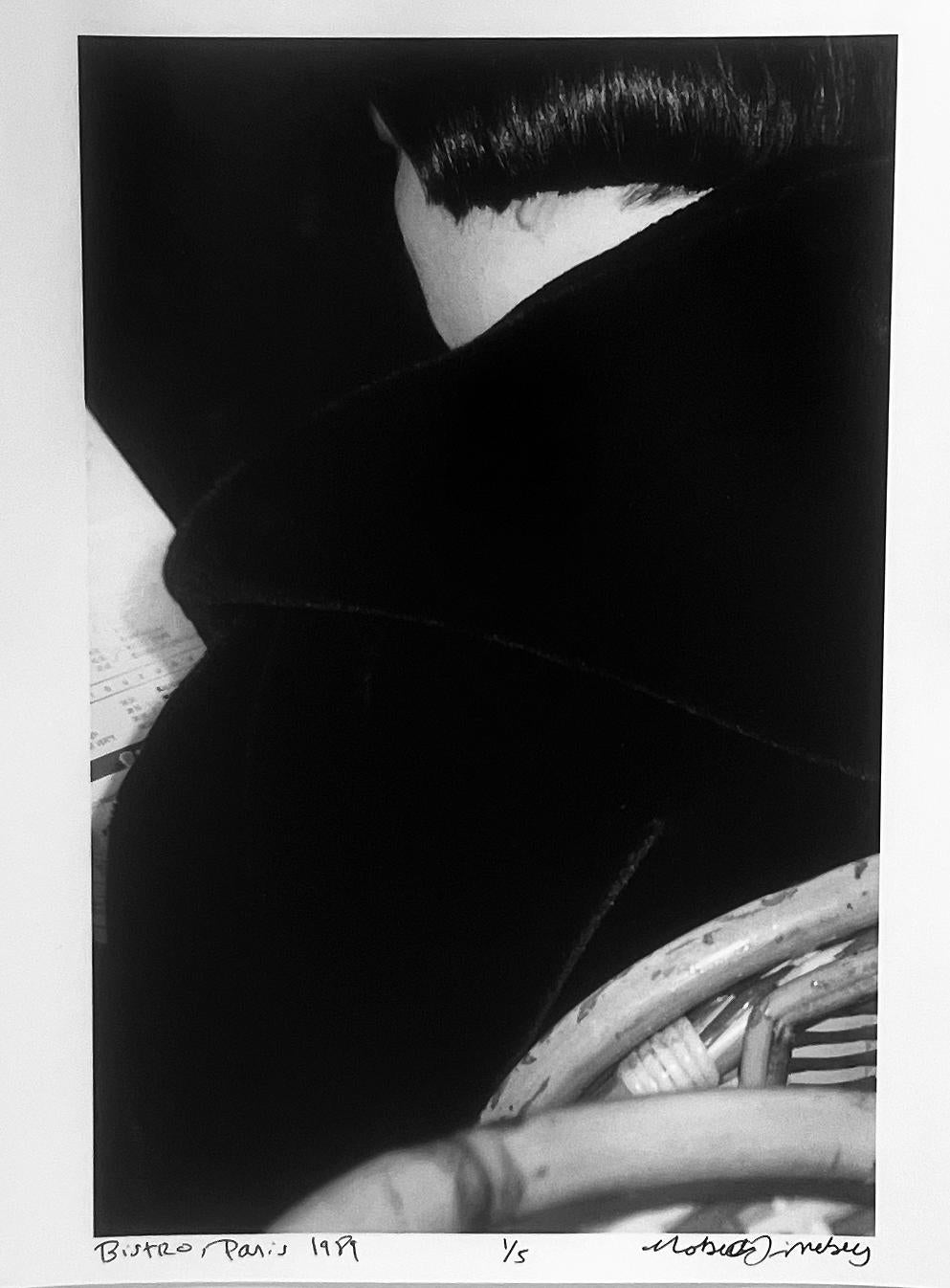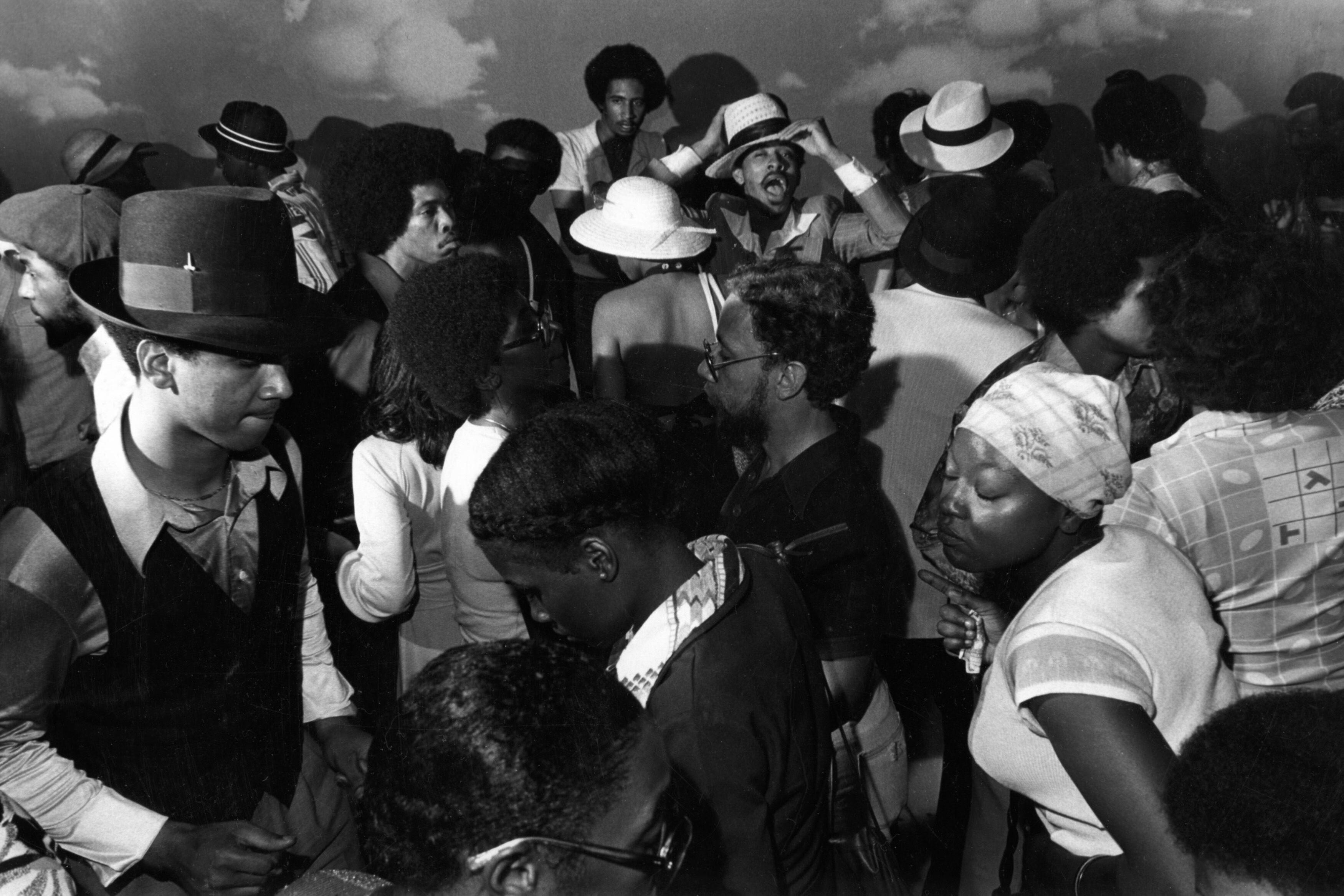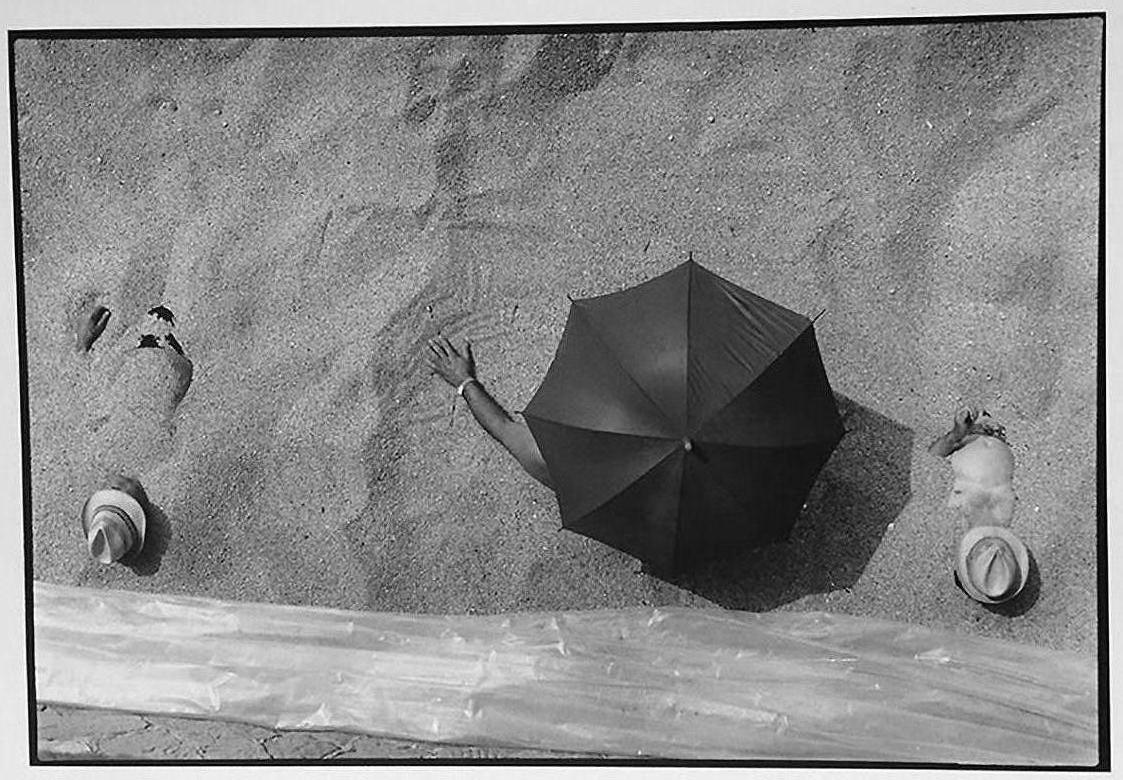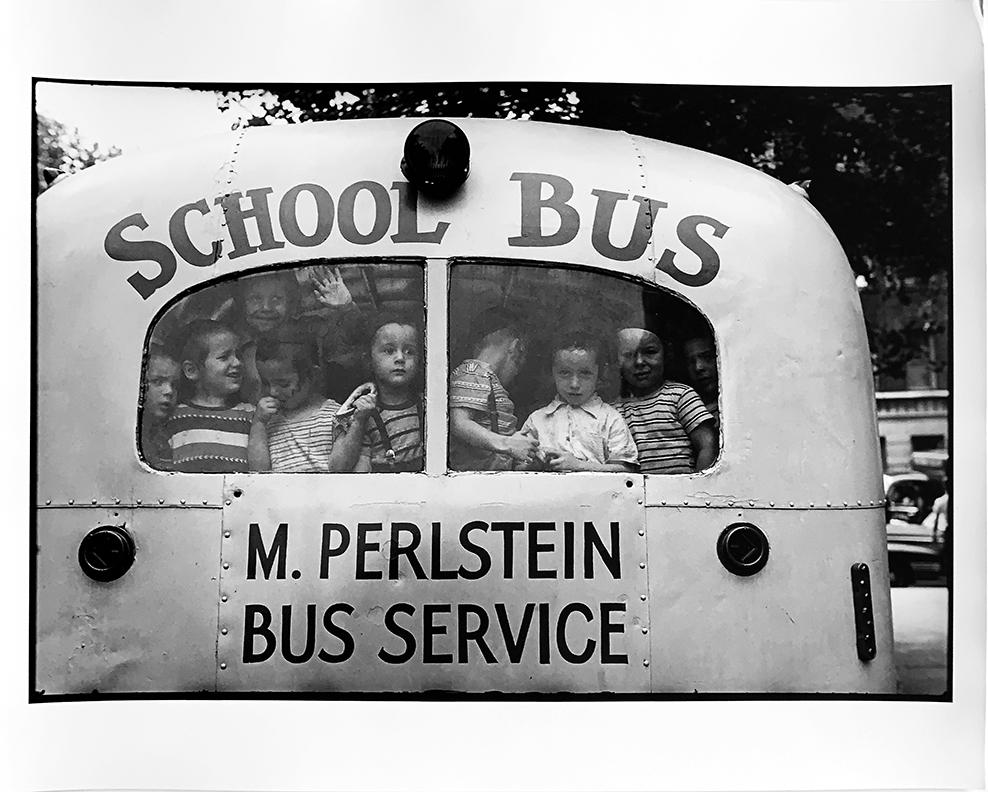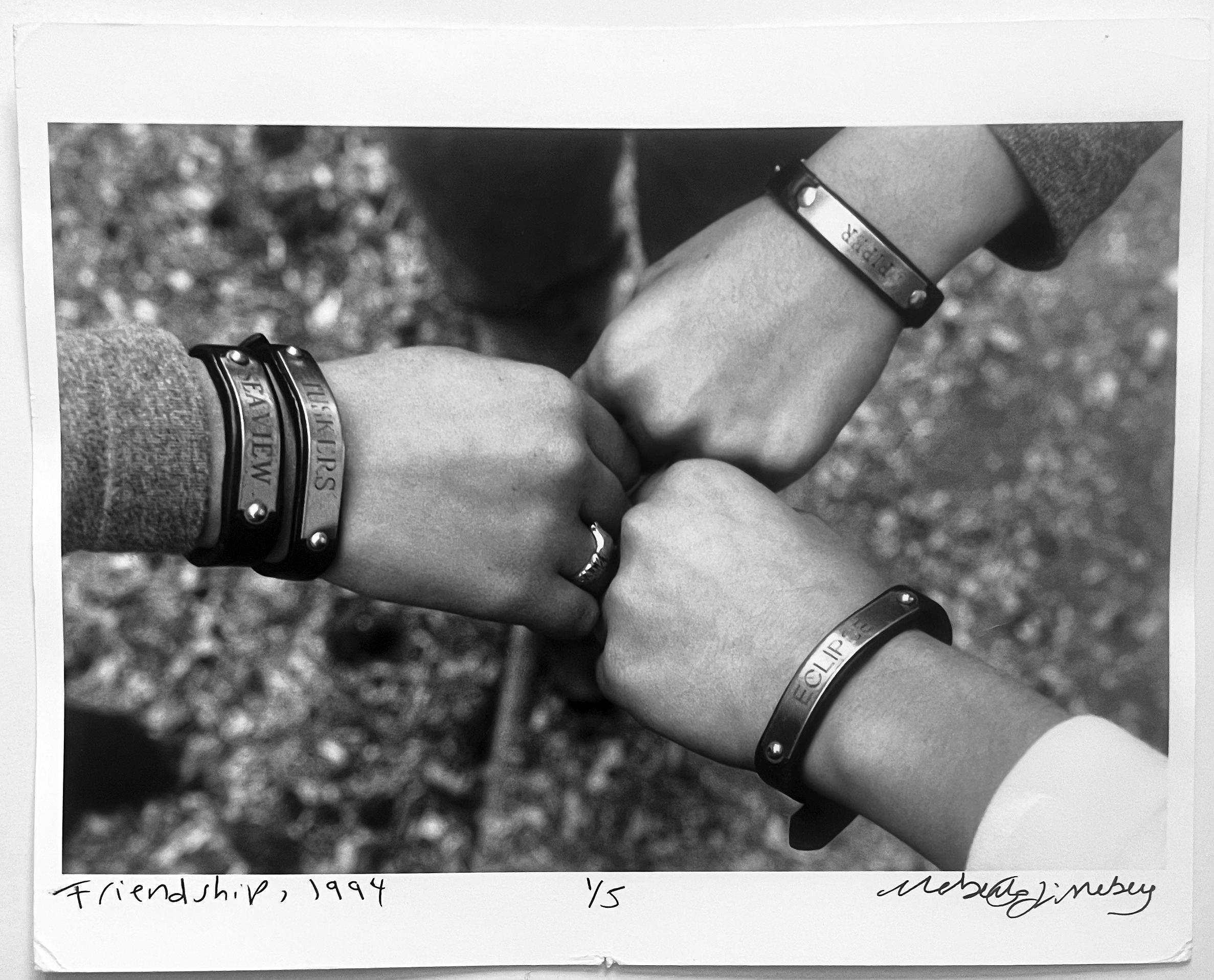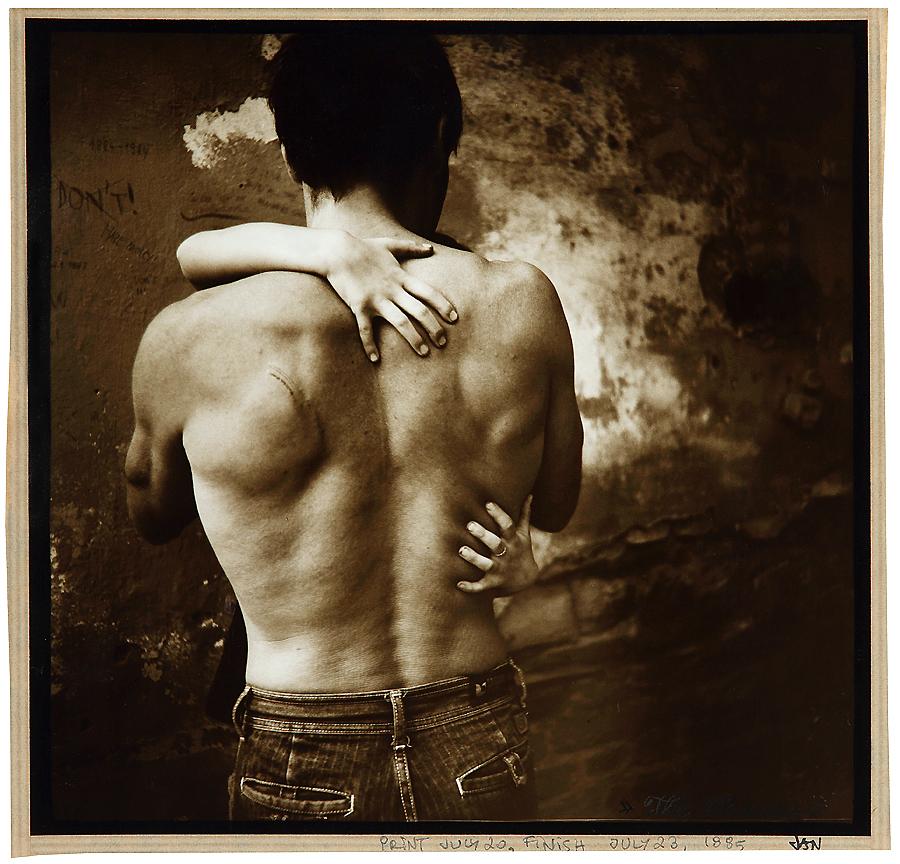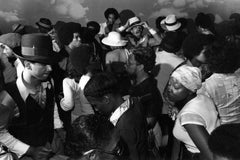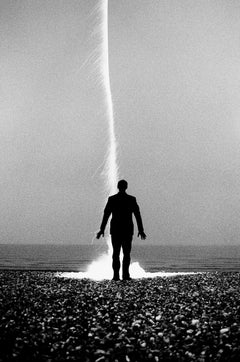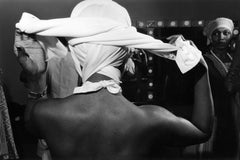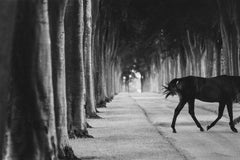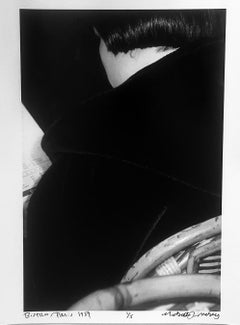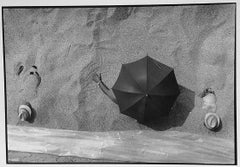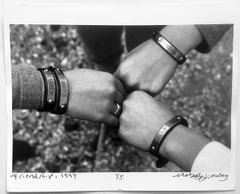A camera is a window through which a photographer interacts with the world, and it's up to the operator to decide whether his camera will be a barrier or a mirror between he and his subjects. In the 1970s, Michael Abramson chose the latter path when he brought his camera to Pepper's Hideout on Chicago's South Side. Following in the footsteps of his acknowledged influence Gyula Halász, a Hungarian photographer better known as Brassaï who became the pre-eminent chronicler of the Paris nightlife he loved so much, Abramson initiated himself into the nightlife of Chicago's predominantly black neighbourhoods. He was very much a part of the scene he documented on film, drinking, laughing, and dancing with his subjects into small hours and becoming as much a part of the atmosphere as the locals who frequented the same nightspots he did. - Joe Tangari (Numero Group, 2009)
This series won Abramson a grant from the National Endowment for the Arts in 1978 and launched his career as a photojournalist. Eventually the project resulted in a hardbound book, Light: On the South Side, including the Grammy and Mojo nominated album, featuring Chicago blues as heard in the clubs from the stage and the jukebox.
Print details: © Michael L Abramson, Untitled #19, CA. 1974 -1977
Vintage Gelatin Silver Print
Image size: 20.5 x 30.5 cm, Printed on 11 x 14" paper (27.9 x 35.4 cm), white border
Series: 1970s Nightclubs of Chicago South Side
Stamped; "Provenance Authenticated by Michael L Abramson Estate, 2011" on verso
Frame: 38 x 48 cm (Custom made classic hardwood frame, stain in black, museum mount board and antireflective UV AR protective art glass)
All prints from 1970s South Side Chicago series are available for purchase as the singular works or as the group of images - please refer to the selection presented on our store front at 1stDibs. All works are Vintage Silver Gelatin prints made by the photographer at the time there were taken.
All prints can be purchased in bespoke hardwood frames, museum mount board and anti-reflective UV protective Art Glass. If you wish to ship or purchase unframed prints, we are happy to arrange that for you.
About the Photographer:
Michael L Abramson was born in New Jersey in 1948, the late American photographer graduated with Master of Photography from Institute of Design, Illinois Institute of Technology in Chicago in 1977. His work was regularly featured in Time, New York Times, Newsweek, People, Forbes, Harpers, Wall Street Journal and other popular American and international magazines.
He was a highly sought after commercial portrait photographer and photojournalist. His subjects comprised celebrities, prominent stars from sport, politics and the entertainment industry included Bill Clinton, Steve Jobs, Steven Spielberg, Michael Jordan, Oprah Winfrey and many more.
Yet it was his 1970s series documenting the Chicago South side club scene that made Abramson’s name. Influenced by Brassaï’s photographs of the 1920s Paris, Abramson caught the stylish nightlife of the funk and soul era in full, alluring swing.
His work was exhibited frequently since 1978, including a solo show at Museum of Contemporary Photography, Chicago, in 2014 and in the same year the group show on American Photography since 1950 at Madison Museum of Contemporary Arts (US).
Many of Abramson’s south side prints were published in a photography book/ 2 LP record set entitled Light on the South Side (2009), by Chicago music recording company Numero Group.
Following Abramson’s death in 2011 a new book entitled Gotta Go Gotta Flow: Life, Love, and Lust From Chicago’s South Side was released by Chicago-based Chicago City Files Press (2015).
His photographs are in major collections including the Smithsonian, the Art Institute of Chicago, the Chicago History Museum, the Milwaukee Art Museum, Madison Museum of Contemporary Art, the Museum of Contemporary Photography in Chicago, the California Museum of Photography and various private collections.
Shipping: Overseas shipping - Flat fee - the work would be wood crated for protection of print and the framing.
